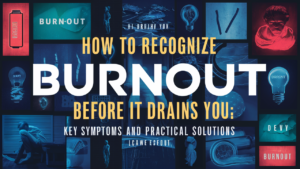Creating a website is just the first step toward establishing an online presence. To attract visitors and grow your audience, you need to ensure your website ranks high on search engine results pages (SERPs). This comprehensive guide will walk you through the essential steps to make your new website rank higher, focusing on key SEO strategies.
Understanding How Search Engines Work
Before diving into SEO tactics, it’s crucial to understand how search engines operate. Think of search engines as librarians of the internet. They constantly crawl through web pages, following links, and indexing content. When someone searches for information, the search engine sifts through its index to provide the most relevant results. Here’s a simplified breakdown of the process:
- Crawling: Search engines use bots, often referred to as “spiders,” to crawl web pages. These spiders follow links from one page to another, gathering data as they go.
- Indexing: The collected data is then indexed. This involves extracting keywords from web page contents and creating a structured database. The forward index lists keywords associated with particular files, while the inverted index lists files associated with particular keywords.
- Ranking: When a user performs a search, the search engine decompiles its page rank algorithm to deliver the most relevant results based on its index.
Key Steps to Improve Your Website Ranking
Crawl Web Pages
To ensure search engines can crawl your web pages efficiently, focus on the following:
- Internal Linking: Use internal links to connect your pages. This helps search engines navigate your site and understand the relationship between different pages.
- Site Structure: A well-structured site with a clear hierarchy makes it easier for search engines to crawl. Use categories and subcategories to organize your content logically.
- Robust XML Sitemap: An XML sitemap acts as a roadmap for search engines. It lists all the important pages on your site, ensuring none are overlooked during crawling.
Pre-process Your Content
Pre-processing content involves optimizing it before search engines index it. Here’s how:
- Keyword Extraction: Identify and use relevant keywords throughout your content. These keywords help search engines understand the context and relevance of your pages.
- Content Structuring: Use headings, subheadings, and bullet points to break up your content. This makes it easier for search engines (and readers) to scan and understand your information.
Metadata Optimization: Ensure your meta titles and descriptions are compelling and include primary keywords. This not only aids indexing but also improves click-through rates (CTR) from search results.
How Does SEO Work? How to Be Search Engine Friendly?
SEO involves a series of strategies designed to improve your website’s visibility on search engines. Here are the key components:
Optimize Web Structure
A well-optimized web structure is the foundation of good SEO. Consider the following tips:
- Clean URLs: Use simple, descriptive URLs that include primary keywords. Avoid using complex query strings.
- Build Sitemaps: Create an HTML and XML sitemap. Submit the XML sitemap to search engines through tools like Google Search Console.
- Robots.txt File: Use a robots.txt file to control which pages search engines can crawl. This helps prevent indexing of duplicate or irrelevant content.
Choose the Right Keywords
Keywords are the terms users type into search engines. Choosing the right keywords is crucial for SEO success:
- Keyword Research: Use tools like Google Keyword Planner, Ahrefs, or SEMrush to find keywords with high search volumes and low competition.
- Long-Tail Keywords: Focus on long-tail keywords – phrases that are more specific and less competitive. These can drive targeted traffic to your site.
- Keyword Placement: Naturally integrate keywords into your content, titles, meta descriptions, headers, and alt text. Avoid keyword stuffing, as it can lead to penalties.
Optimize Your Web Pages
User experience (UX) plays a significant role in SEO. Here are some ways to optimize your web pages:
- Core Web Vitals: Ensure your site meets Google’s Core Web Vitals standards. These include:
- LCP (Largest Contentful Paint): Measures loading performance. Aim for LCP to occur within 2.5 seconds of when the page first starts loading.
- FID (First Input Delay): Measures interactivity. Aim for FID to be less than 100 milliseconds.
- CLS (Cumulative Layout Shift): Measures visual stability. Aim for CLS to be less than 0.1.
- Page Speed: Improve page load times by optimizing images, leveraging browser caching, and minimizing JavaScript.
- Mobile-Friendliness: Ensure your site is responsive and provides a good user experience on all devices. Use Google’s Mobile-Friendly Test to check your site.
Optimize External Links
External links, or backlinks, are links from other websites to your site. They signal to search engines that your content is valuable and trustworthy. Here’s how to build and optimize them:
- High-Quality Content: Create valuable, shareable content that naturally attracts backlinks. Think of comprehensive guides, infographics, and original research.
- Guest Blogging: Write guest posts for reputable sites in your industry. Include links back to your website in your author bio or within the content.
- Outreach: Reach out to bloggers, influencers, and industry experts to share your content. Building relationships can lead to natural backlink opportunities.
- Avoid Black-Hat SEO: Refrain from using black-hat SEO techniques like buying links or participating in link schemes. These can lead to severe penalties.
Additional Tips for SEO Success
To further enhance your SEO efforts, consider these additional tips:
- Regularly Update Content: Fresh, up-to-date content signals to search engines that your site is active and relevant. Regularly update old posts and add new content.
- Use Social Media: Promote your content on social media platforms to increase visibility and drive traffic to your site. Social signals can indirectly impact SEO.
- Engage with Your Audience: Respond to comments on your blog and social media. Engaging with your audience can increase dwell time and reduce bounce rates, positively impacting SEO.
- Monitor Analytics: Use tools like Google Analytics and Google Search Console to track your site’s performance. Analyze traffic sources, user behavior, and keyword rankings to identify areas for improvement.
Conclusion : How to Make Your New Website Rank Higher
By following these steps, you can significantly improve your website’s ranking on search engines. Focus on creating a site structure that search engines can easily crawl, select the right keywords, optimize your web pages for a great user experience, and build high-quality external links. With consistent effort and attention to SEO best practices, your website will climb the SERPs and attract more visitors.
Remember, SEO is an ongoing process. Stay updated with the latest trends and algorithm changes, and continuously refine your strategies. With dedication and persistence, you’ll see your website rise in the rankings, bringing you closer to your online goals.
Optimized Image Alt Text: SEO guide infographic illustrating steps to improve website ranking including web crawling, keyword optimization, user experience, and external linking.
By implementing these strategies, you’ll be well on your way to making your new website rank higher and achieving online success. Keep experimenting, stay patient, and watch your website thrive in the digital landscape.























